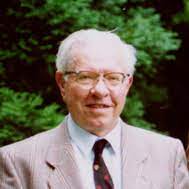Fred Hoyle was one of the great scientists of the 20th century, as well as one of the most controversial, due to the eccentric theories he defended. His most important scientific discovery had to do with the nucleosynthesis of elements in stars, heavier than hydrogen and helium, which are the simplest and lightest in existence. In particular, from his theory on the formation of carbon atoms, Hoyle deduced an early version of the fine-tuning problem, which made him go from atheism to a vaguely theistic position, as can be seen in this paragraph from his article The universe: past and present reflections (Engineering & Science, 1981):
Would you not say to yourself… "Some super-calculating intellect must have designed the properties of the carbon atom, otherwise the chance of my finding such an atom through the blind forces of nature would be utterly minuscule... A common sense interpretation of the facts suggests that a superintellect has monkeyed with physics, as well as with chemistry and biology, and that there are no blind forces worth speaking about in nature. The numbers one calculates from the facts seem to me so overwhelming as to put this conclusion almost beyond question."
 |
| Fred Hoyle |
Hoyle is remembered, above all, for having invented the term Big Bang for the current standard cosmological theory. He intended to make it appear ridicule, because he was in favor of an alternative theory, the steady state theory, which Hoyle himself had helped to develop, together with Hermann Bondi and Thomas Gold. But when the Big Bang theory led to two surprising accurate predictions (the average composition of the cosmos and the cosmic background radiation) he had no choice but to accept it.
Among the bizarre theories that he
defended during his life the following stand out:
- Panspermia. According to Hoyle, life did
not appear on Earth spontaneously, but as a consequence of the invasion of
our planet by microscopic living beings from other stars. He also argued
that the evolution of life on Earth has been influenced, and somewhat
directed, by extraterrestrial viruses arrived via comets. In particular, the
1918 flu pandemic and the mad cow disease of the late 20th century would
have had an extraterrestrial origin. In a lecture delivered in 1982 (Evolution from space), Hoyle wrote this:
If one proceeds directly and straightforwardly in this matter,
without being deflected by a fear of incurring the wrath of scientific opinion,
one arrives at the conclusion that biomaterials with their amazing measure of
order must be the outcome of intelligent design. No other possibility I have been able to think of...
- Archaopteryx fossils.
According
to Hoyle, the fossils of the oldest bird found in the fossil record were
modern fakes. This theory has been refuted by microscopic analysis of these
fossils.
- The origin of oil. According to Hoyle and Thomas Gold,
oil would not come from the accumulation and decomposition of organic
remains of living beings, but from coal deposits.
- Stonehenge. Hoyle supported the theory formulated by Gerald Hawkins about
the prehistoric use of the Stonehenge monuments to predict eclipses.
In addition to his scientific activities,
recognized or controversial, Fred Hoyle also devoted part of his time to
writing science fiction novels. One of them, with the same title as this post,
was October the first is too late
(1966), which probably was the first work of fiction based on the theory of the
quantum multiverse formulated by Hugh Everett III in 1957. This theory asserts that,
whenever there is a quantum collapse of a particle property (such as spin), the
universe splits into two copies that thereafter evolve independently. One
consequence of this theory is that anything that can happen actually happens
in some of the universes of the quantum multiverse.
In this novel, Hoyle explains through his
characters his own ideas about the nature of time. Like Einstein, he is in
favor of the time B theory,
so he thinks that the flow of time is an illusion. Then he combines this idea
with the quantum multiverse, and proposes universes where time does extremely weird
things, such as that one part of the Earth is living in 1966, another in 1917,
another in the 5th century B.C., and another… who knows when?
Here's how the protagonist explains it: If there’s one thing we can be sure about in physics it
is that all times exist with equal reality… I’m not really trying to say the
present is without validity. Rather that it can’t have any validity in physics.
To which the narrator of the story replies: ‘Then
physics isn’t everything? A big admission for a physicist, isn’t it?’
Here Hoyle forgets two things: a) the
second law of thermodynamics, which tells us that time does have validity in
physics (remember what Eddington said about this, which I mentioned in another
post); b) the difference between science and philosophy, which I have often
mentioned, and which is invisible to many scientists. In fact, the B-theory of
time is a philosophical theory rather than scientific, so Hoyle's “scientific” reasoning
collapses at this point.
Thematic Thread about Literature and Cinema: Previous Next
Manuel Alfonseca

No comments:
Post a Comment